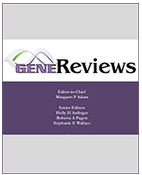 The review on oculopharyngeal muscular dystrophy which involved researchers and clinicians from the institute has just been updated in October 2020 on the GeneReviews website.
The review on oculopharyngeal muscular dystrophy which involved researchers and clinicians from the institute has just been updated in October 2020 on the GeneReviews website.
Clinical features
Oculopharyngeal muscular dystrophy (OPMD) is a neuromuscular disease characterized by ptosis and dysphagia due to selective involvement of the muscles of the eyelids and those of the pharynx, respectively. For the vast majority of people with typical OPMD, the average age of onset for ptosis is 48 and dysphagia is 50. In 5 to 10% of people with severe POPD, ptosis and dysphagia appear before the age of 45 and are associated with weakness in the lower limb girdle from around 60 years of age. Difficulty swallowing, which determines the prognosis, increases the risk of life-threatening aspiration pneumonia and poor nutrition. Other manifestations as the disease progresses may include limited gaze upwards, atrophy and weakness of the tongue, difficulty chewing, a damp voice, weakness of the facial muscles, weakness of the axial muscles, and weakness of the proximal girdle, mainly in the lower limbs. Some people with severe illness may need a wheelchair. Neuropsychological tests have shown altered scores in executive functions in some.
Diagnosis / test
The diagnosis of OPMD is made in an proband with a suggestive phenotype in which one or the other of the following genetic findings is identified:
- a repeated expansion of heterozygous GCN trinucleotide from 11 to 18 repeats into the first exon of PABPN1 (~ 90% of affected individuals)
- repeat biallelic expansions of GCN trinucleotides that are either compound heterozygous (GCN [11] with a second enlarged allele) or homozygous (GCN [11] + [11], GCN [12] + [12], GCN [13] + [13], etc.) (~ 10% of those affected).
Management
The treatment of the various manifestations consists of:
- for ptosis, it may include blepharoplasty by resection of the elevating palpebral fascia or frontal suspension of the eyelids
- for dysphagia, the initial treatment is a change in diet. Surgery for dysphagia should be considered when symptomatic dysphagia has a significant impact on quality of life
- in addition, physiotherapy and occupational therapy are encouraged. Thus, assistive devices may be required to prevent falls and facilitate walking and mobility.
- finally, neuropsychological support can be implemented as needed
Monitoring consists of the routine assessment of:
- neuromuscular and oculomotor involvement;
- dysphagia, including nutritional status and diet;
- respiratory function given the increased risk of aspiration and nocturnal hypoventilation;
- cognitive function, including the development of psychiatric symptoms.
Genetic counseling
The transmission of OPMD is autosomal dominant. The risk to an proband’s siblings depends on the genetic status of their parents: siblings who inherit one or two repeated GCN expansions will be affected.
